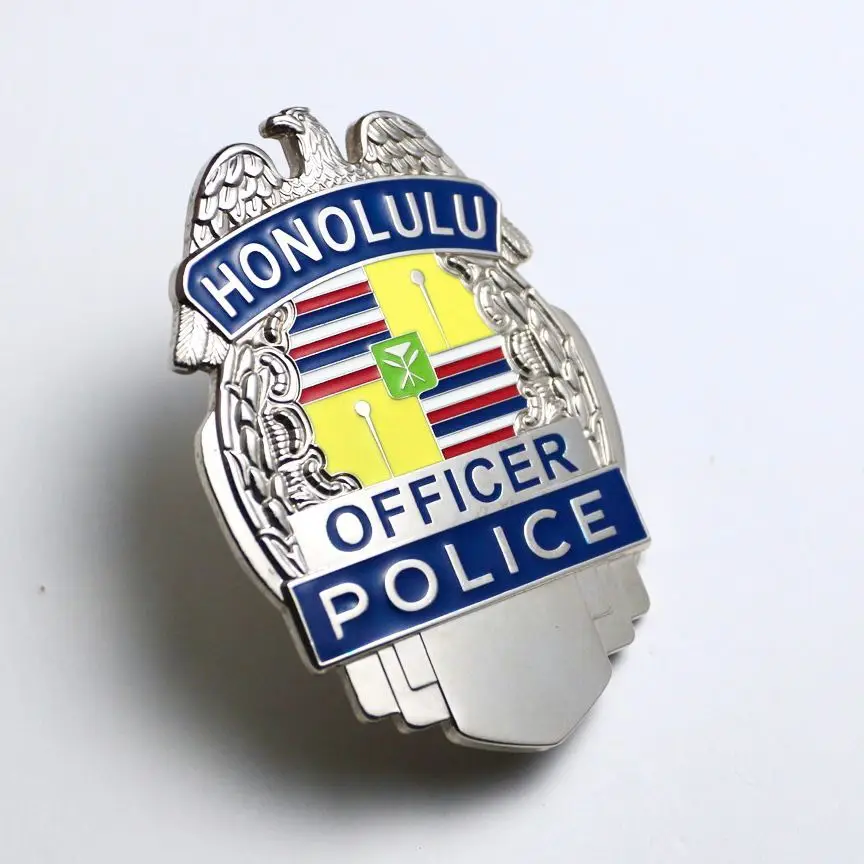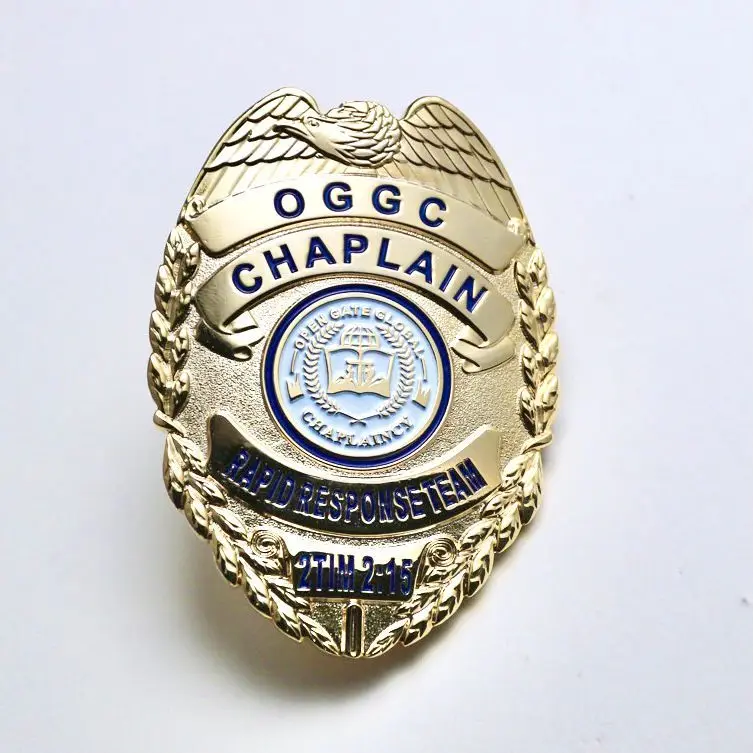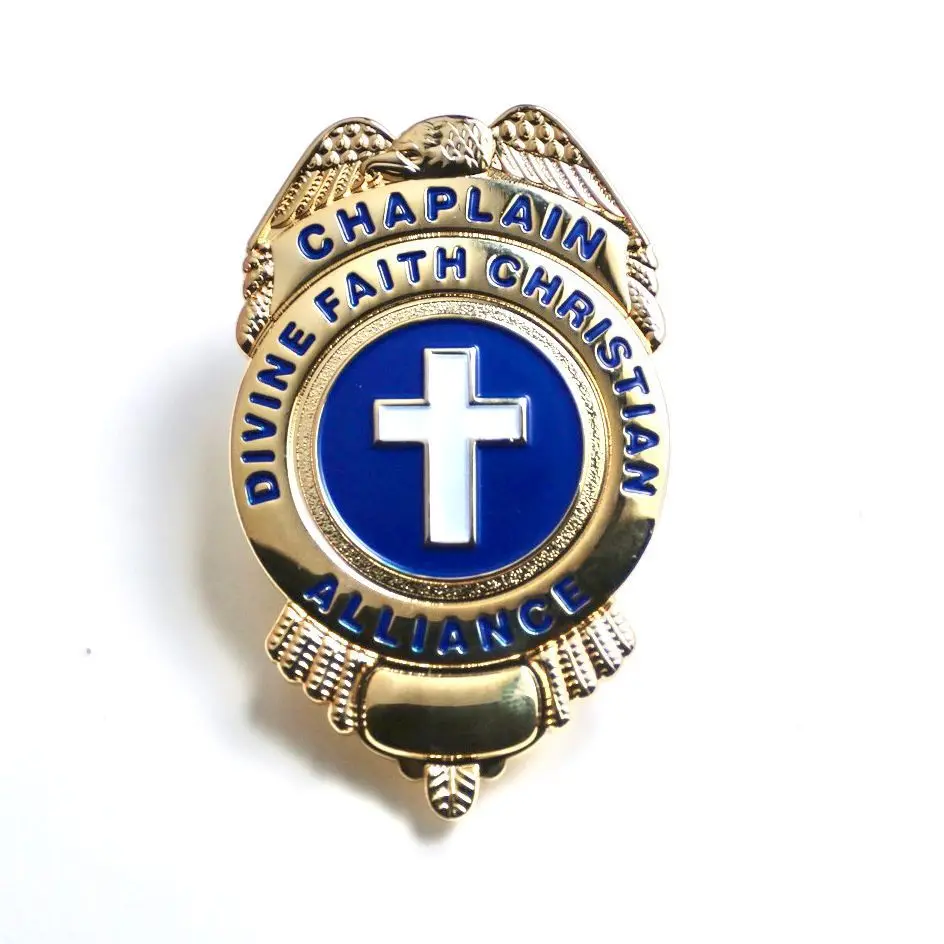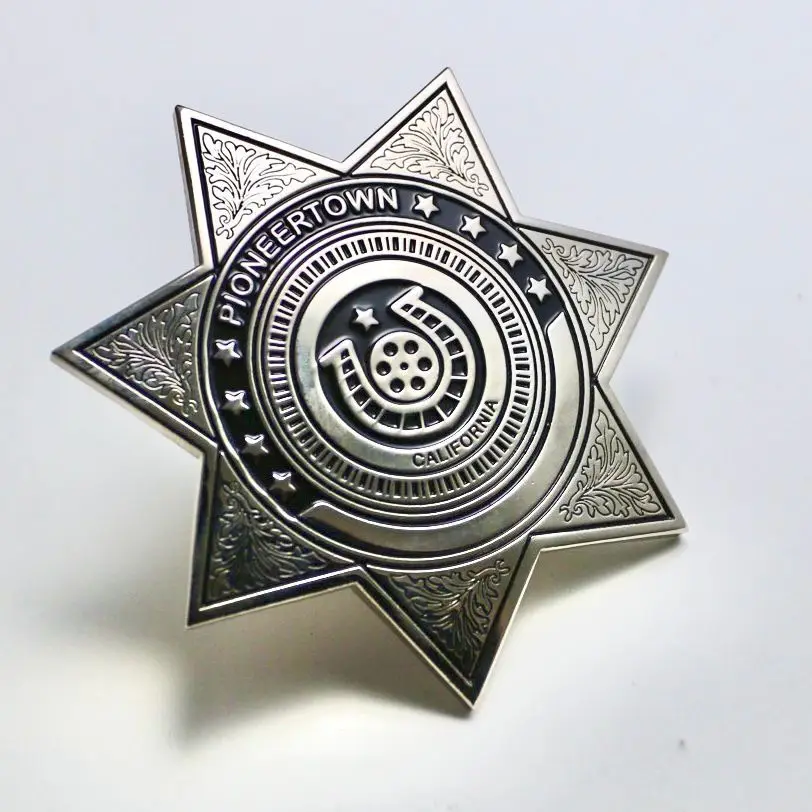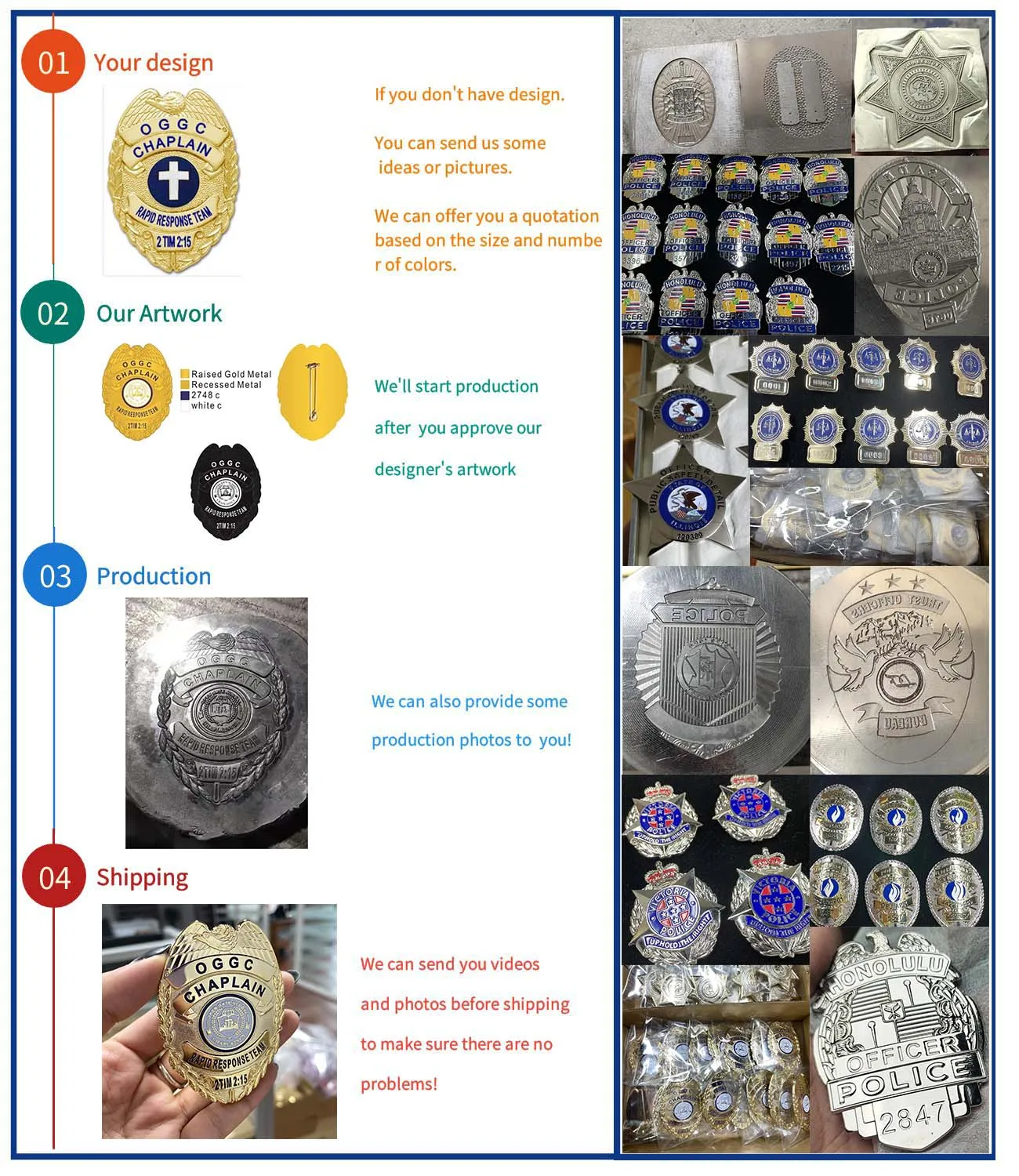1. **Material**: mainly made of zinc alloy, which is a lightweight and durable material, sometimes other materials such as iron, brass, stainless steel or aluminum are also available.
2. **SIZE & DESIGN**: the size can be customized according to customer's requirement, common sizes are 1 inch, 1-1/2 inch, 2 inch, etc., and the thickness is usually between 1.0-2.0mm. The design can be single or double-sided with 2D or 3D effect.
3. **Process**: made by casting/die-casting process, surface treatment may include plating, which can be nickel, copper, brass, gold, silver, etc., and can be glossy or bronze or matte effect, the product can also be double plated and color dyed.
4. **Color**: Color matching can be done according to Pantone Color Chart (Pantone Color Chart).
5. **Epoxy Coating**: According to customer's requirement, you can choose whether to add epoxy coating to increase durability and protection.
6. **Accessories**: It can be equipped with different fixing methods such as butterfly clips, rubber clips, safety pins or long pins.
7. **Packaging**: standard plastic bag packaging or gift box packaging, the gift box can be paper, velvet or plastic.
8. **DELIVERY**: Support factory delivery, express delivery (FedEx, DHL), air freight, sea freight, direct transportation and other delivery methods.
9. **Use**: This kind of badge is usually used for sports memorabilia, company logos, branding, special events, military and law enforcement agency logos, school and organization badges, etc.
10. **Customized Service**: We provide customized design service, and can produce according to the design drawings, samples or detailed requirements provided by customers.
11. **QUALITY ASSURANCE**: With strict quality assurance system and perfect management system to ensure product quality.
12. **Production capacity**: With advanced equipment and skilled workers, we are able to deliver high quality and innovative products on time.
13. **Price Competitiveness**: As a long-term strategic partner, we offer competitive prices to optimize customers' profit margins.
14. **Quick Delivery**: Samples can be shipped in 5-7 days after sample confirmation, and mass production can be delivered in 10-15 days after confirmation.
15. **Reliable Transportation**: use FedEx, DHL, UPS, TNT and other credible channels to ship products smoothly.
This customized metal badge is perfect for branding, recognition and awards due to its durability, customizability and professional appearance.
These are the accessories we usually use:
























